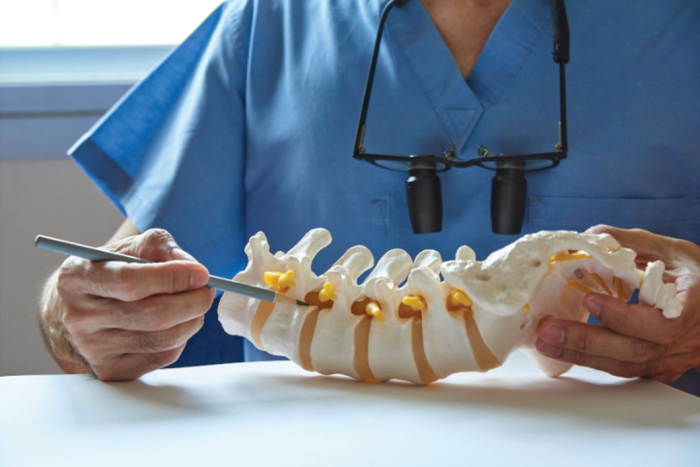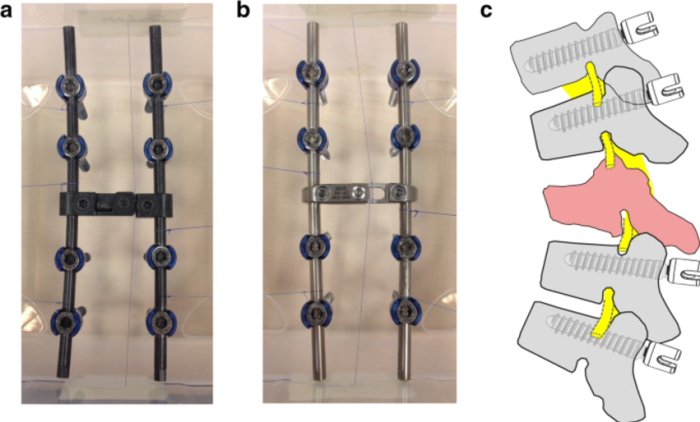How Technology is Shaping Spinal Cord Surgeries
The advancement of technology has revolutionized spinal cord surgeries, making them safer and more efficient. Innovations such as robotic-assisted systems and augmented reality tools enable surgeons to perform complex procedures with enhanced precision. These technologies reduce errors, minimize invasiveness, and shorten recovery times for patients. Additionally, real-time imaging tools allow for better visualization of the surgical site, ensuring delicate structures like nerves and blood vessels are protected.

High-Precision Robotics in Spinal Cord Operations
Robotics has become a game-changer in spinal cord surgery, offering unparalleled accuracy and control. Robotic systems like Mazor X and ExcelsiusGPS assist surgeons in navigating complex spinal structures with millimeter-level precision. These systems reduce the risk of human error, improve the placement of screws and implants, and ensure optimal alignment during procedures. Additionally, robotic assistance shortens surgical times and enhances patient safety.
The Role of 3D Printing in Creating Custom Spinal Implants
3D printing technology has introduced a new era in spinal cord surgeries by enabling the creation of patient-specific implants. This customization ensures better compatibility with the patient’s anatomy, improving the effectiveness of surgical interventions. 3D-printed implants are lightweight and durable, often made from biocompatible materials that promote bone integration. Surgeons can use this technology to plan complex procedures with greater accuracy.
Smart Surgical Instruments: Enhancing Surgeon Precision
Smart surgical instruments equipped with sensors and digital interfaces are redefining precision in spinal surgeries. These tools provide real-time feedback, helping surgeons adjust their techniques during the procedure. For instance, smart drills can alert surgeons to variations in bone density, preventing over-penetration. By integrating data-driven insights, these instruments enhance safety, minimize errors, and improve procedural efficiency.
Advanced Microscopes for Spinal Cord Surgeries
High-powered surgical microscopes are crucial for spinal cord procedures, providing magnified and detailed views of delicate anatomical structures. These tools enable surgeons to identify and protect critical nerves and blood vessels during complex surgeries. Advanced features such as 3D visualization and enhanced lighting improve accuracy and reduce the risk of complications.
Augmented Reality (AR) in Spinal Cord Surgical Planning
Augmented reality (AR) is revolutionizing spinal cord surgical planning by overlaying digital images onto the physical anatomy. Surgeons can use AR headsets to visualize intricate spinal structures in real time, aiding in precise navigation and implant placement. This technology enhances preoperative planning and intraoperative execution, reducing the likelihood of errors.
Navigation Systems: Mapping the Path to Spinal Health
Navigation systems are indispensable in modern spinal cord surgeries, providing real-time guidance to surgeons. These systems use advanced imaging techniques, such as CT or MRI, to create a 3D map of the spine. Surgeons can track their instruments on this map, ensuring accurate targeting of affected areas.
Innovative Drill Systems for Spinal Fixation
Modern drill systems designed for spinal fixation are engineered to improve accuracy and reduce surgical risks. These drills are often lightweight, ergonomic, and equipped with safety features like depth controls to prevent over-penetration. Some systems also integrate with navigation technologies, providing real-time feedback during screw placement.
Expandable Cage Technology in Spinal Cord Procedures
Expandable cage technology is revolutionizing spinal fusion procedures by providing adjustable support during surgery. These cages are inserted into the spine in a collapsed state and expanded in situ to restore disc height and alignment. Made from biocompatible materials, expandable cages improve spinal stability while reducing the risk of adjacent segment degeneration. Their minimally invasive insertion method minimizes tissue damage and promotes quicker recovery.
Exoscope Systems: Revolutionizing Surgeon Vision
Exoscope systems are redefining visualization in spinal cord surgeries by providing high-definition, 3D imagery of the surgical field. Unlike traditional microscopes, exoscopes offer a wide field of view and greater flexibility in positioning. Surgeons can operate more comfortably, as these systems eliminate the need for prolonged stooping. Their ability to deliver detailed visuals ensures precision in complex spinal procedures, reducing the risk of errors.
Magnetically Controlled Growing Rods for Pediatric Cases
Magnetically controlled growing rods (MCGR) are a breakthrough in treating pediatric spinal deformities like scoliosis. These rods can be lengthened non-invasively using external magnets, eliminating the need for repeated surgeries. MCGR technology allows for gradual correction of spinal deformities as the child grows, reducing complications and improving quality of life. This innovation represents a significant advancement in pediatric spinal care.
Surgical Robots: Enhancing Accuracy in Spinal Procedures
Surgical robots are transforming spinal surgeries by offering enhanced precision, stability, and efficiency. These systems assist in tasks such as screw placement and spinal alignment, significantly reducing the risk of complications. Robots also integrate with imaging technologies to provide real-time feedback, ensuring accurate execution of complex procedures. Their ability to perform repetitive tasks with consistent accuracy makes them invaluable in modern spinal surgery.
Carbon Fiber Reinforced Implants in Spinal Procedures
Carbon fiber-reinforced implants are gaining popularity in spinal surgeries due to their strength, lightweight properties, and radiolucency. Unlike metal implants, these materials do not interfere with imaging, allowing for clear postoperative assessments. Their biocompatibility and durability make them an excellent choice for patients requiring long-term stability and reduced risks of implant failure.

Carbon Fiber Reinforced Implants in Spinal Procedures
Surgical Innovations in Treating Spinal Tumors
Treating spinal tumors requires specialized tools designed to remove abnormal growths while preserving healthy tissues. Innovations like ultrasonic aspirators allow for precise tumor dissection with minimal damage to surrounding structures. Additionally, advanced navigation systems help surgeons locate and remove tumors accurately. These tools improve outcomes and reduce the risks associated with spinal tumor surgeries.
Long-Term Benefits of Spinal Cord Surgery for Herniated Discs
Surgery for herniated discs relieves nerve pressure, improving mobility and quality of life. It also prevents complications like chronic pain or nerve damage. With modern techniques, patients often achieve long-lasting results and a more stable spine. Learn more about the lasting advantages of herniated disc surgery for better health and mobility.
The Role of Imaging Techniques in Diagnosing Spinal Cord Issues
Imaging tools like MRIs, CT scans, and X-rays are essential in diagnosing spinal cord problems. These technologies help pinpoint herniated discs, fractures, and tumors, guiding accurate treatments. They also assist in tracking progress post-treatment. Discover how imaging supports spinal cord care and improves treatment outcomes.
Sterile Barrier Technology for Spinal Cord Procedures
Sterile barrier technology is critical for preventing infections during spinal cord surgeries. Advanced drapes, shields, and antimicrobial coatings ensure a contamination-free surgical environment. These innovations not only reduce the risk of postoperative infections but also enhance the overall safety of complex spinal procedures. By maintaining sterility, these technologies improve patient outcomes and reduce hospital stays.
Best Spinal Cord Surgery in India
The Best Spinal Cord Surgery in India is performed by expert neurosurgeons who specialize in treating conditions affecting the spinal cord, using advanced techniques to ensure optimal patient outcomes and a personalized treatment plan based on individual health needs.
Best Spinal Cord Surgery Hospitals in India
The best spinal cord surgery hospitals in india are equipped with state-of-the-art technology and world-class facilities, providing comprehensive care from diagnosis to surgery and post-operative rehabilitation, ensuring a smooth recovery process for patients.
Spinal Cord Surgery Cost in India
When considering the spinal cord surgery cost in india, patients benefit from affordable, transparent pricing at leading hospitals, which offer cost-effective solutions without compromising the quality of care and surgical expertise.
Best Spinal Cord Surgery Doctors in India
The best spinal cord surgery doctors in india are highly experienced in treating complex spinal conditions, employing a patient-centric approach that ensures personalized care, precision in surgical techniques, and dedicated post-surgery follow-up to enhance recovery outcomes.
FAQs About the Innovative Surgical Tools Used in Spinal Cord Procedures
How does AI contribute to spinal surgery tool development?
AI enhances tool development by optimizing designs, aiding surgical planning, and refining robotic systems for better precision.
What is expandable cage technology, and how is it used?
Expandable cages are devices inserted into the spine in a collapsed state and expanded to restore disc height and alignment during spinal fusion surgeries.
Why are exoscope systems important in spinal cord surgeries?
Exoscope systems provide high-definition 3D visuals of the surgical field, improving precision and reducing the risk of errors in complex procedures.
How do magnetically controlled growing rods benefit pediatric cases?
These rods allow non-invasive adjustments to correct spinal deformities as children grow, reducing the need for repeated surgeries and improving patient outcomes.
What are the advantages of carbon fiber-reinforced implants?
Carbon fiber-reinforced implants are lightweight, durable, and radiolucent, allowing clear imaging and providing long-term stability without interfering with diagnostics.
What role do neurovascular tools play in spinal surgeries?
Neurovascular tools enable surgeons to safely manipulate delicate nerves and blood vessels, reducing risks such as paralysis or vascular injury during spinal procedures.
What innovations exist for treating spinal tumors?
Innovations like ultrasonic aspirators and advanced navigation systems allow precise tumor removal while preserving healthy tissues, improving patient outcomes.
How do disc replacement tools improve spinal surgery outcomes?
Disc replacement tools facilitate the placement of artificial discs, which mimic natural spinal motion, offering quicker recovery and enhanced mobility compared to spinal fusion techniques.
What is thermal ablation, and how is it used in spinal pain management?
Thermal ablation tools, such as those used in radiofrequency ablation, target and disrupt pain signals, providing effective relief for chronic spinal pain with minimal recovery time.
What is the importance of sterile barrier technology in spinal surgeries?
Sterile barrier technology, including antimicrobial coatings and drapes, prevents infections during spinal surgeries, ensuring a safer environment and reducing postoperative complications.
What are the future trends in spinal cord surgical tools?
Future trends include the integration of AI, robotics, nanotechnology, bioengineered implants, and augmented reality tools to enhance precision, safety, and spinal care outcomes.
How is technology transforming spinal cord care?
Technology is revolutionizing spinal cord care by offering advanced tools like AI-driven systems, robotics, and minimally invasive devices, ensuring better precision, safety, and recovery rates.